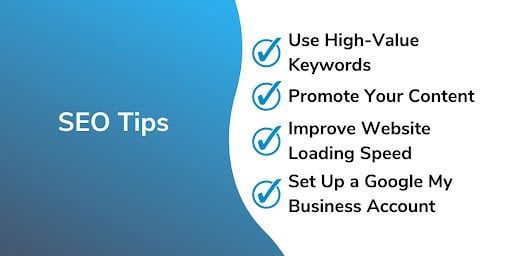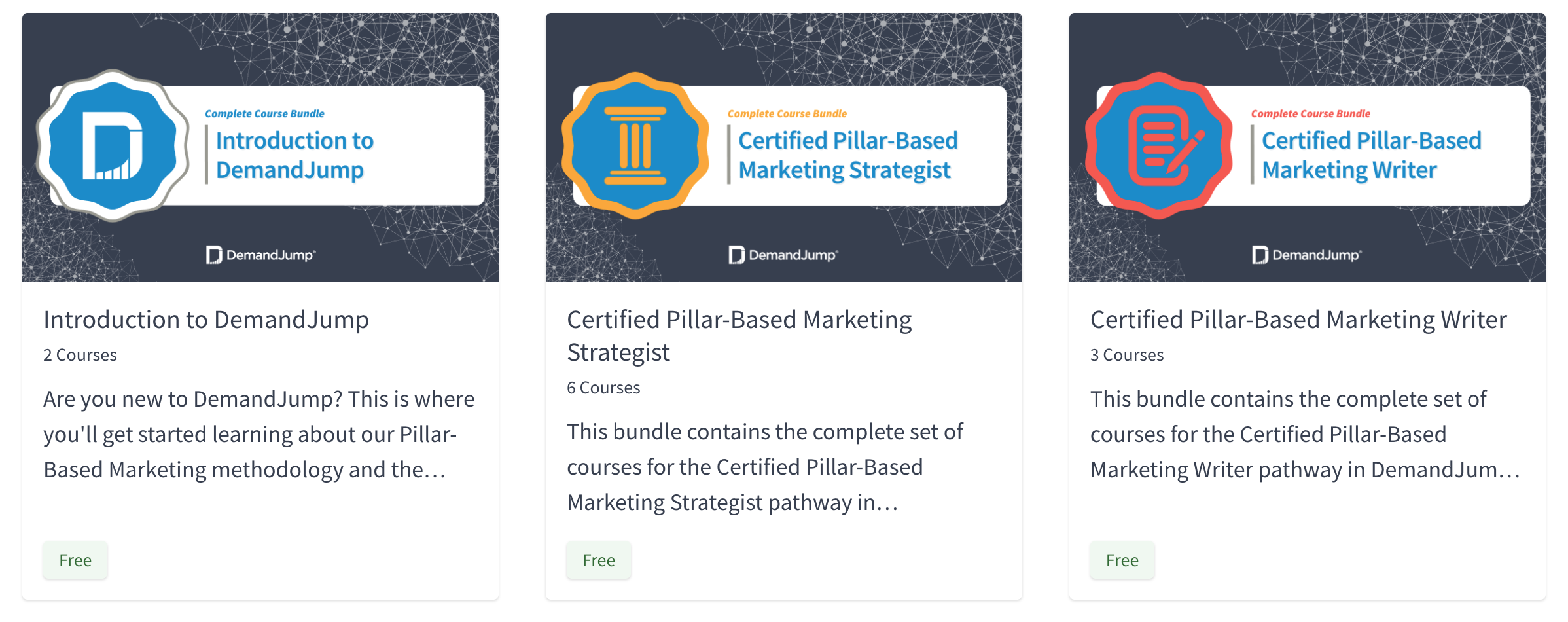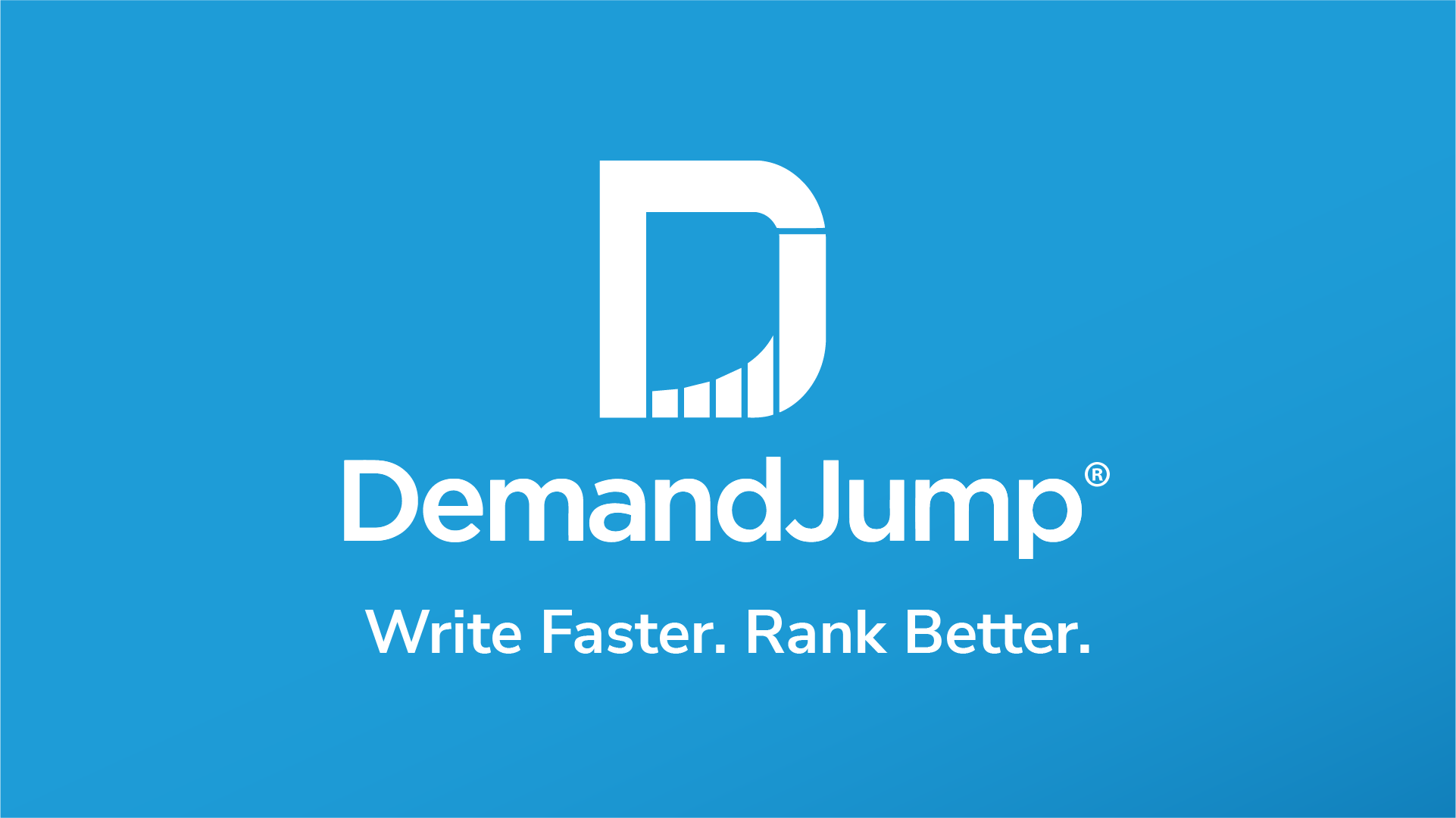SEO strategy is essential for businesses to exceed in the digital space. After all, it helps you get more visibility in organic search. But what exactly does SEO mean? What are some key do’s and don'ts? Are there any free-to-use SEO strategy templates to jumpstart taking action?
We have the answers to these questions and more in this guide to creating an SEO plan. And yes, we have an SEO plan template that you can download to help you take your first steps into SEO or refine your current strategy.
Ready to learn how to take your business to page one? Let’s get started!
What Is SEO?
SEO, meaning search engine optimization, is a set of best practices that businesses use to gain visibility for their web content. Examples of SEO in digital marketing including:
- Writing keyword driven blogs
- Promoting web content on social media platforms
- Optimizing website loading speeds
What Are the Types of SEO in Digital Marketing?
There are four types of SEO that your business should focus on improving: on-page, off-page, local, and technical. While it may be tempting to go all-in on one aspect of SEO, each type provides important benefits, especially when you use them together. Let’s dive into what’s involved in each kind of SEO as well as the do’s and don’ts for your SEO plan:

On-Page SEO
On-page SEO is what you do on your website. The keywords you use and which content you include on each webpage impact your user experience and search engine rankings.
On-Page SEO Do’s
- Use high-value keywords that your audience is searching for. Using the right keywords signals to search engines and your audience that your content provides value. Search engines will present your writing to searchers more often, and your readers will see your business as the solution to their problems.
To effectively use keywords, it’s important to include both types of SEO keywords: short- and long-tail. Short-tail keywords are phrases that are a few words long and attract readers that want to learn more about a broad topic like “used cars new me” or “ballet dancing benefits.” Long-tail keywords are more specific phrases or questions that attract audiences searching for detailed answers. Long-tail keywords may read as “How much should I expect to spend on a used car?” or “Can ballet dance be a lifelong activity?”
If you’re not sure which phrases and questions your audience is searching for, that’s okay! You can use DemandJump’s keyword research tool to prioritize keywords by search volume, your current rankings, and what your competitors are ranking for.
- Publish Your Content in Groups. At DemandJump, we’re firm believers in Pillar-Based Marketing (PBM). In fact, we believe in it so much (because we’ve seen incredible results), that we’ve created the first and only SEO platform dedicated to Pillar-Based Marketing. So just how does PBM increase page one rankings for businesses like yours? By creating topic clusters—or groups of blogs that address a shared topic from different angles—you can provide valuable answers for your audience while proving your expertise to search engines.
One way our customers find success is by publishing their topic clusters (also known as pillars) all together. That way, you make a big impression on search engines, and your readers can explore all of the great information hosted on your site.
On Page SEO Don’ts
- Rely on keyword stuffing. Search engine algorithms can pick up on when you’re trying to game the system by filling your content with keywords instead of writing useful content. Of course, you still need to include keywords, but you only need to mention them a few times per page. As far as keywords are concerned, quality far outweighs quantity.
- Post duplicate content. While the pages on your website will often share similar themes and content, it’s important to avoid copying your own writing word for word. Each of your blogs should be a unique piece of writing, even if they answer similar questions as your other pieces of content. Otherwise, search engines may penalize you, and your readers could grow frustrated if they don’t get any new information by exploring your site.
Off-Page SEO
Off-page SEO refers to content that is not hosted on your website that still helps boost your website’s search engine rankings. Your social media posts, paid search ads, and other businesses that link to your website in their content can all improve your rankings.
Off-Page SEO Do’s
- Promote your content through organic and paid channels. When you create a new blog and publish it on your website, don’t just let it sit there. Yes, using the right keywords to guide well-researched content will draw in more readers, but promoting that content through social media posts and paid search ads will get you more readers quicker.
- Have a presence where your competitors are. Your competitors are likely doing more than just improving their website. They’re also advertising, posting on social media, and sending out press releases to different publications. If your competition is connecting to people on LinkedIn, you should be, too. The same goes for Facebook, Instagram, and YouTube, among other platforms.
Off-Page SEO Don'ts
- Rely solely on paid ads. Paid search ads rocket you to the top of search engine results pages (SERPs). While this is great for exposure, these ads often have less engagement (only 3.17% according to Search Engine Journal) than organic content, like blog or social media posts. Instead of relying only on this low-engagement method, you can use it as part of your overall marketing strategy.
- Try to take backlinking shortcuts. Having other websites linking to yours can boost your rankings. However, these links need to be from reputable sources. Be wary of SEO services that promise to increase your rankings just by getting a lot of sites to link to yours. Oftentimes, these quick fixes rely on link farms, or sites that offer no real value and exist only to link to other sites. Google is aware of these practices and punishes them with lower rankings.
Local SEO
Local SEO refers to steps that you can take to specifically target the area you operate in, which can be especially valuable for certain businesses. You can improve your local SEO through on-page and off-page methods.
Local SEO Do’s
- Use keywords that connect your content to your local area. Specific phrases and questions like “Haircut near me” and “Where to get the tastiest burger in Indianapolis” signal to both readers and search engines that you provide value in your specific geographical location. By including these types of keywords in your content, you can rank higher for searches that prioritize local businesses.
- Set up and maintain a Google My Business account. Google is the most popular search engine, and having an active Google My Business account allows you to connect with even more searchers. Essentially, this service allows you to publish your business’s website link, location, contact information, description, and include a space for customer reviews. This makes it easier for your customers to find your business both in person and online. Having visible reviews can also show prospective customers that you actually provide the value that you claim to.
Local SEO Don’ts
- Ignore or lash out at negative reviews. When you open up your business to reviews, chances are you’ll get some negative responses. Some will be fair, and others won’t be. The worst thing you can do is to escalate an already negative situation in a public space. If you lash out, potential customers won’t think you’re right; they’ll think you’re hostile. Instead, you can offer the reviewer a way to improve their experience, through a product exchange for example. That way, other viewers will see that you are doing your best to satisfy customers, no matter how they react.
- Let your Google My Business profile become out of date. Your Google My Business profile only helps customers find you if your website link, address, and contact information are up-to-date. If any of this information is missing or incorrect, then potential customers may become frustrated and go to your competitors. Those lost customers will view your competitor’s website, which will further boost their rankings, not yours.
Technical SEO
Technical SEO depends on how well your website runs, which affects both user experience and how search engine bots decide to index and rank your web pages.
Technical SEO Do’s
- Improve loading speeds. Websites that load slowly are frustrating. Slow loading speeds turn away readers, and they also disincentivize search engines from improving your rankings. In fact, slow loading speeds have the opposite effect. You can improve your website’s speed by cleaning up your code, compressing images, and reducing redirection pages.
- Have an intuitive site map. Users should be able to easily navigate their way through your website. Having clearly labeled pages like ‘Solutions,” “Contact Us," and "FAQ" help your visitors know exactly where to go for the information they need. Creating an XML sitemap provides a similar advantage for search engine bots by listing all of the pages on your website, which makes crawling more efficient for those bots.
Technical SEO Don’ts
- Ignore images. Images and graphics are easy ways to engage your audience. After all, a picture says a thousand words and more quickly. But did you know that search engine bots also care about images? You can improve your rankings by adding meta descriptions to your images, which is another great place to add keywords to your website without over-stuffing your content. Clear meta descriptions also improve your website’s accessibility.
- Assume all of your links still work. If your links lead nowhere, then search engines may penalize your site and cause you to rank lower. When people click on a link within your site, they should quickly land on the expected page instead of a slow redirection or frustrating error page. Regularly check whether your links work or not, especially if you recently made major changes to your website’s layout.
Do I Need SEO for My Website?
Yes—if you want your target audience to engage with your web content and do business with you, you need to optimize your content for both search engines and human readers. To put just how important SEO is into perspective, think about your own internet searching habits. When’s the last time you’ve gone beyond the first page of results?

Without following SEO best practices, you won’t reach page one. That means when your target audience searches for answers to their problems, you won’t show up as the solution—your competitors will. The good news is that by implementing the right action plan, your website can start ranking higher and connecting with your audience.
What Is an Action Plan in SEO?
An SEO action plan is a detailed strategy with the purpose of increasing your website’s page one rankings. An effective action plan takes into account your business’s goals, resources, and current search engine rankings. In other words, you need to know where you are, where you want to go, and what tools you have available to get you from point A to point B.
How Do I Create an SEO Marketing Plan?
A thorough SEO marketing plan takes your goals, resources, and current position into account. Your plan should also be detailed: what do you want to achieve, when, and who is responsible for each task?
In the following SEO plan example outline, we take a look specifically at what your content strategy should include:
- Goals: Should your content build brand awareness, encourage your audience to engage with more of your educational content, or convert readers into paying customers?
- Timeline: What is your goal for publishing your optimized content? When do you expect to start seeing a return on your investment?
- Topics: Which topics related to your business are your customers searching for and are likely to support your business goals?
- Pillar Plan: Within each topic, what specific sub-topics and questions can you dive deeper into?
- Keywords: What phrases and questions are people searching for that are related to your topic? Do you have enough relevant keywords to complete your SEO pillar plan, or do you need to reevaluate the topic you chose?
- Writing: What is your brand’s voice? Do you have an in-house writing team, or will you work with an agency? Which keywords will you include in each blog? DemandJump’s content briefs make it easy to jump into writing by showing you which keywords and questions to include in your outline.
- Publishing: How will you link your content together? Which web pages will host which pieces of content? Are you promoting your content on other channels like social media?
- Analysis: After publishing your content, how does it rank? Are readers staying on your page, and do they take your desired call-to-action (CTA) after reading?
- Upgrades: What changes can you make to your content to improve results? Can you add graphics to existing blogs or change outdated keywords to more relevant ones?
- What’s Next: What other topics do your customers want to learn more about? What lessons did you learn from previous pillars that you can apply to your next?
Remember that your plan is an evolving document. As you learn what works and what doesn’t, make changes along the way!
SEO Strategy Template Free Download
Looking for an SEO action plan template to get you started? Look no further than our Pillar Strategy Worksheet, which you can download as a Microsoft Excel File or open in Google Sheets. This template is designed specifically for tracking your progress through your pillar strategy, from planning through publishing and promotion. Here’s what fields are included:
- Pillar, Sub-Pillar, and Supporting Blog titles to view your entire pillar strategy at a glance.
- Draft status for each blog to identify any potential bottlenecks.
- Publishing status to see which pieces are live and which aren’t.
- Promotional status to track which pieces are presented to a wider audience.
- Final URL space to make referencing specific blogs from your plan quick and easy.
For a detailed guide on PBM strategy and how to make the most of this template, take the Strategist Pathway Course at DemandJump University, included with your free DemandJump account.

Can I Do My Own SEO for My Website?
You can absolutely do your own SEO for your website—especially with the right tools in your belt. At DemandJump, our goal is to help businesses at all levels increase their search engine rankings, so you can meet your customers where they’re at: online. Whether you know your way around search engine algorithms or you’re building an online audience for the first time, DemandJump has the DIY SEO tools to give you the upper hand:
- Insight Reports: See which topics are in-demand for readers and how they connect to each other.
- Keyword Research: Discover exactly which phrases and questions your audience cares about.
- Content Briefs: Take the guesswork out of writing and see which keywords provide value for each of your blogs.
DemandJump helps you make your SEO plan and put it into action.












